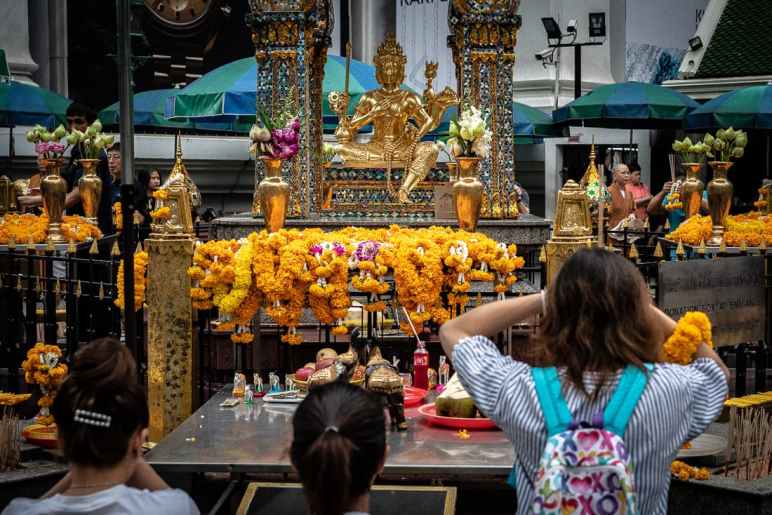ACM Museum or Asian Civilisations Museum
The Asian Civilisations Museum is featuring Enlightened Ways: The Many Streams of Buddhist Art in Thailand as part of Thai CulturalFest organized by the National Heritage Board. The Thai National Museums’ collection is complemented by artworks from 11 Thai national museums, the Asian Civilisations Museum, and private collectors for a combined exhibit of over 1,500 years of Buddhist art in Thailand.




Buddhist Art Timeline at Enlightened Ways
- Dvaravati Culture, 6th to 9th Century
- Srivijaya Empire, 7th to 13th Century
- Lopburi: Khmer Influence, 11th to 13th Century
- Sukhothai Kingdom, Mid-13th to Late 16th Century
- Ayutthaya Kingdom, 14th to 18th Century
Ayutthaya

Today, the Historic City of Ayutthaya is a UNESCO World Heritage Site. It became one of the world’s most powerful cosmopolitan ports and a centre of global diplomacy and trade as the second capital of Siam.
It has since become an archaeological ruin, with only what remains of tall prang (reliquary tower) and monasteries that dwarf modern temples surviving to give a sense of its glorious era. The kingdom was conquered by the Burmese in 1767, and its capital city was burned to the ground.
The sight of the colossal relics and Buddha statues at the museum, which I pass on my way to work, reminds me of a recent trip to Ayutthaya.
Wat Maha That
The origin of Wat Maha That is unclear, although there are several myths regarding its creation. It may have been erected as early as 1384 by King Rachatirat to house a Buddha relic, or during the reign of King Boromaraja (1370-88).

Wat Ratcha Burana
To the south of Wat Maha, That is Wat Ratcha Burana, which was erected in 1424 and subsequently rebuilt after the invasion. In 1958, archaeologists uncovered many bronze Buddha sculptures and votive tablets, as well as golden objects. The majority of them are currently on display at the Chao Sam Phraya Museum.

Merit Making and Brahmanism
Merit making is described as an important element of Thai Buddhism in the exhibit. Buddhist cosmology in Thailand has also long included Brahmanism, which was once a form of Hinduism. These two points made me recall merit making at Erawan Shrine in Bangkok. The Erawan Shrine was erected in 1956 to appease malevolent spirits that were taking labourers’ lives and causing calamities during the construction of today’s Grand Hyatt Erawan.


This temple’s apparent efficacy caused it to become one of Thailand’s most revered sites. The temple is dedicated to the four-faced Hindu god Brahma, whose statue is housed in a golden structure. Worshippers come to the region from all directions, day or night, in order to make merit.
The ancient art of Thai Buddhism is a living tradition that continuously evolves and adopts new forms of expression. The Erawan Shrine in Bangkok is an illustration of how contemporary religion and customs have evolved to appeal to today’s youngsters.
Enlightened Ways: The many streams of Buddhist Art in Thailand
30 November 2012 – 17 April 2013
Special Exhibitions Gallery,
Asian Civilisations Museum Empress Place
(10-minute walk from Raffles Place MRT Station)
For more information, click here.
More Pictures of Enlightened Ways








